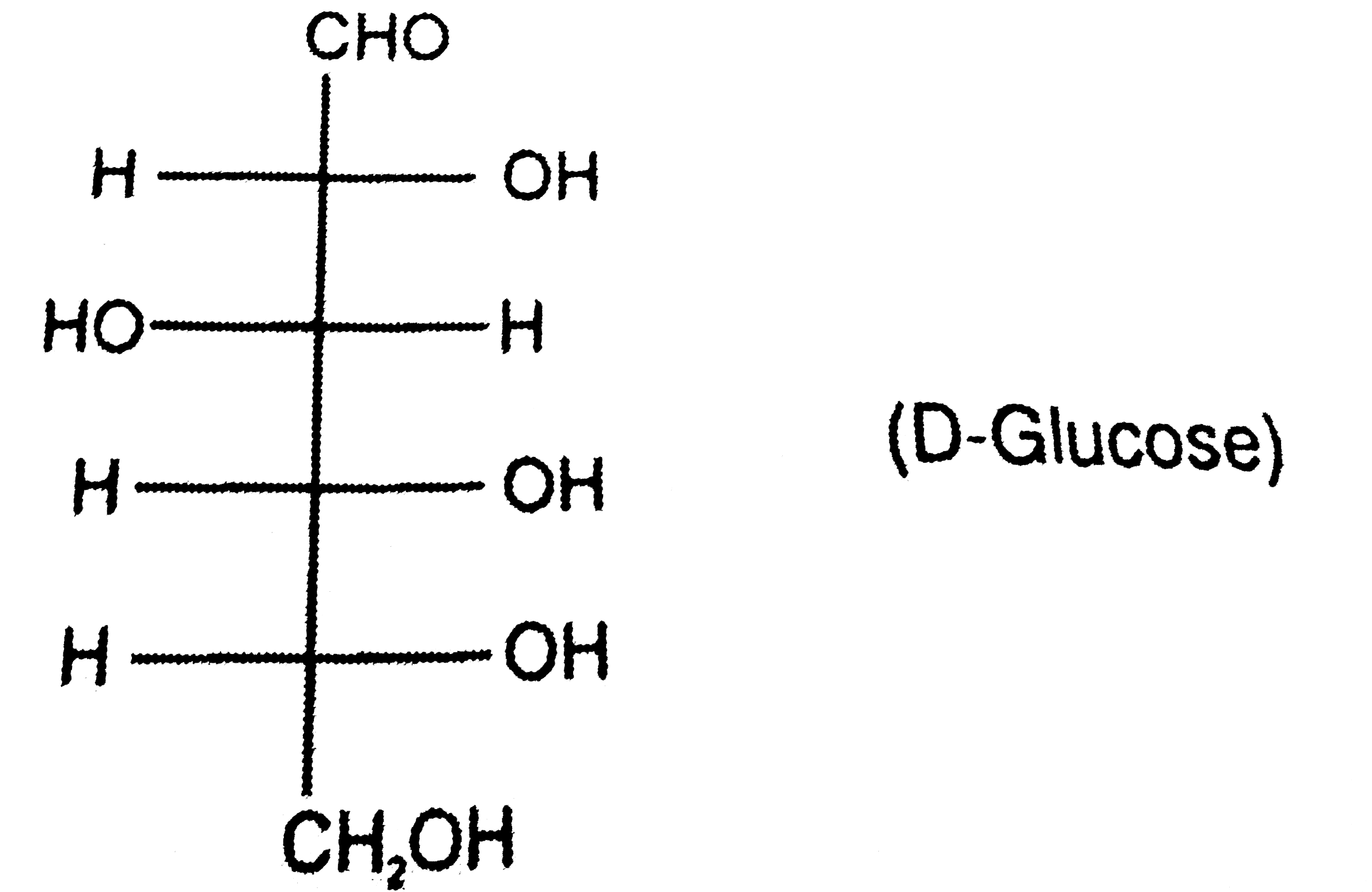Assertion : Glucose is correctly named as D-(+)-glucose. ' 3
Reason : ‘D’ before the name of glucose represents its dextrorotatory nature.
If both assertion and reason are true and reason is the correct explanation of assertion.
If both assertion and reason are true but reason is not the correct explanation of assertion.
If assertion is true but reason is false.
If both assertion and reason are false.
The correct Answer is:C
To solve the question, we need to analyze both the assertion and the reason provided.
Step 1: Understand the Assertion
The assertion states that "Glucose is correctly named as D-(+)-glucose."
- This is true. Glucose is indeed referred to as D-(+)-glucose. The "D" indicates the configuration of the molecule based on the orientation of the hydroxyl (OH) group on the asymmetric carbon farthest from the aldehyde or ketone group.
Step 2: Understand the Reason
The reason states that "‘D’ before the name of glucose represents its dextrorotatory nature."
- This statement is misleading. While D-glucose is dextrorotatory (it rotates plane-polarized light to the right), the "D" in D-glucose does not directly indicate its optical activity. Instead, it refers to the configuration of the molecule. The optical activity is denoted by the "+" sign, which indicates that it is dextrorotatory.
Step 3: Conclusion
- The assertion is true: Glucose is correctly named as D-(+)-glucose.
- The reason is false: The "D" does not represent dextrorotatory nature; it represents the configuration of the molecule.
Final Answer
- The assertion is true, and the reason is false.
The assertion states that "Glucose is correctly named as D-(+)-glucose."
- This is true. Glucose is indeed referred to as D-(+)-glucose. The "D" indicates the configuration of the molecule based on the orientation of the hydroxyl (OH) group on the asymmetric carbon farthest from the aldehyde or ketone group.
The reason states that "‘D’ before the name of glucose represents its dextrorotatory nature."
- This statement is misleading. While D-glucose is dextrorotatory (it rotates plane-polarized light to the right), the "D" in D-glucose does not directly indicate its optical activity. Instead, it refers to the configuration of the molecule. The optical activity is denoted by the "+" sign, which indicates that it is dextrorotatory.
- The assertion is true: Glucose is correctly named as D-(+)-glucose.
- The reason is false: The "D" does not represent dextrorotatory nature; it represents the configuration of the molecule.
- The assertion is true, and the reason is false.
Topper's Solved these Questions
- BIOMOLECULESBOOK - NCERT FINGERTPS ENGLISHCHAPTER - BIOMOLECULESEXERCISE - Carbohydrates
35 Videos
- BIOMOLECULESBOOK - NCERT FINGERTPS ENGLISHCHAPTER - BIOMOLECULESEXERCISE - Proteins
30 Videos
- BIOMOLECULESBOOK - NCERT FINGERTPS ENGLISHCHAPTER - BIOMOLECULESEXERCISE - EXEMPLER PROBLEMS
16 Videos
- AMINES BOOK - NCERT FINGERTPS ENGLISHCHAPTER - AMINES EXERCISE - ASSERTION & REASON CORNER
14 Videos
- CHEMICAL KINETICSBOOK - NCERT FINGERTPS ENGLISHCHAPTER - CHEMICAL KINETICSEXERCISE - Assertion And Reason
15 Videos
Similar Questions
The correct IUPAC name of D-Glucose is :

View SolutionAssertion (A) D(+)− Glucose is dextrorotatory in nature.
Reason (R) 'D' represents its dextrorotatory nature.
(a)Assertion and reason both are correct statements and reason explains the assertion.
(b)Both assertion and reason are wrong statements
(c)Assertion is correct statement and reason is wrong statement
(d)Assertion is wrong statement and reason is correct statement.
View Solution
Knowledge Check
Assertion : D-glucose is dextrorotatory whereas L-glucose is laevorotatory.
Reason : D-compounds are always dextro and L-compounds are always laevorotatoryAIf both assertion and reason are true and reason is the correct explanation of assertion.BIf both assertion and reason are true but reason is not the correct explanation of assertion.CIf assertion is true but reason is false.DIf both assertion and reason are false.
Polymer of α-D glucose is
View SolutionCorrect statement for α-D-glucose is
View SolutionThe number of chiral centres in D-(+)-glucose is
View SolutionD - Glucose and D - Mannose are :
View SolutionC3-epimer of D-Glucose is
View SolutionAssertion: Glucose does not gives 2,4-DNP test.
Reason: Glucose exists in cyclic hemiacetal form
View SolutionAssertion : Glucose is favoured respiratory substrate.
Reason : When glucose is used as respiratory substrate and is completely oxidised, RQ is 1.
View Solution